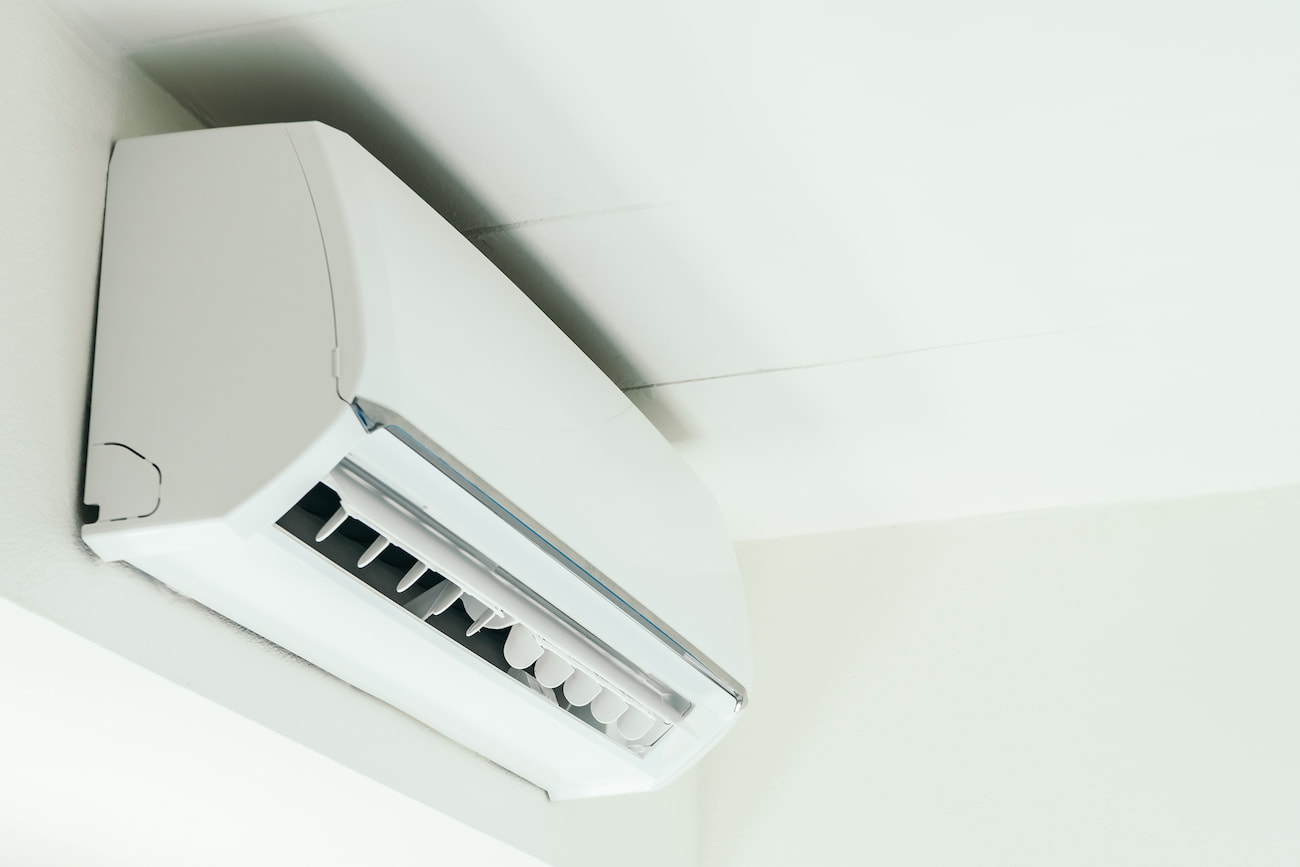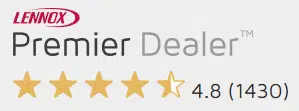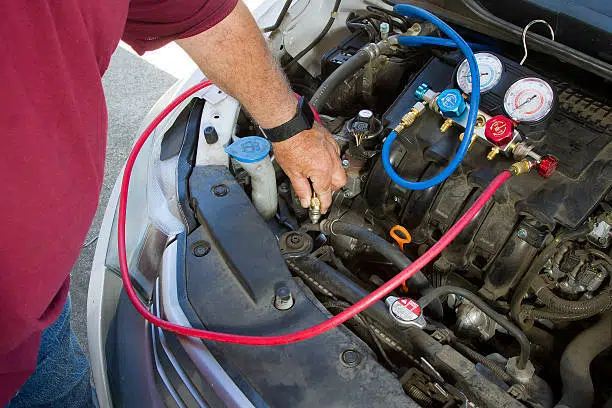
Table of Contents
- What Is an HVAC System?
- Step 1: Understand Your Needs and Budget
- Different Types of HVAC Systems
- Energy Efficiency Ratings
- Local Climate Considerations
- How to Choose the Proper Size of the HVAC System?
- The Importance of Installation and Maintenance
- How to Save Budget on Your New HVAC System with Government Incentives and Rebates?
- Conclusion
When it comes to maintaining a comfortable and energy-efficient indoor environment in the diverse climate conditions of Canada, the role of HVAC systems cannot be overstated. These systems are the unsung heroes of our homes and businesses, quietly working behind the scenes to keep us warm in the winter, cool in the summer, and breathing clean, fresh air year-round.
However, buying an HVAC system is no simple task. It’s a substantial investment that can significantly impact your comfort, energy bills, and even the value of your property. In this article, we’ll demystify HVAC systems, exploring everything you need to know before making a well-informed purchase.
What Is an HVAC System?
Let’s begin with the basics. So, what is an HVAC system?
HVAC stands for Heating, Ventilation, and Air Conditioning. These systems are a combination of various components that work together to regulate the indoor environment of your home or business. Key components of the HVAC systems include heating units like furnaces and heat pumps, cooling units such as air conditioners, ventilation systems, and ductwork. Each component has a specific function, and they work in tandem to create a comfortable and controlled living space.
But HVAC systems aren’t limited to just residential homes. They’re used in various applications, from small residential units to large commercial buildings and industrial complexes. The scale and requirements of these systems can differ significantly depending on the application.
Now that we have a fundamental understanding of what HVAC systems are, let’s dive into the key factors you need to consider before purchasing one.
Step 1: Understand Your Needs and Budget
Before you start exploring the world of HVAC systems, take a moment to evaluate your specific needs. The size of your space, local climate, and your heating and cooling preferences are critical factors to consider. For instance, do you want zoned heating and cooling, or is central air conditioning sufficient for your home or office? Understanding your unique requirements is the first step in making an informed choice.
HVAC systems can be a significant investment, and your budget should not only cover the initial purchase but also the long-term operating costs. Remember, the cheapest option may not be the most cost-effective in the long run. Consider the energy efficiency of the system and how it impacts your monthly utility bills. A slightly higher upfront cost for a more efficient system may save you money over time.
Different Types of HVAC Systems

Selecting the right HVAC system for your home or business can be a daunting task. With a multitude of options available, it’s easy to get overwhelmed and confused. Below, we’ll break down the three primary types of HVAC systems, so that it will be easier for you to understand their unique features and applications.
Split Systems
Split systems consist of an indoor unit (usually located in your basement or utility room) and an outdoor unit. They are ideal for homes with existing ductwork. The indoor unit contains the evaporator coil and blower, while the outdoor unit houses the compressor and condenser.
Packaged Systems
In contrast, packaged systems house all the components in a single outdoor unit. These systems are suitable for homes without existing ductwork. They are often used in smaller residences or commercial buildings.
Hybrid Split Systems
Hybrid split systems combine the benefits of a traditional split system with a heat pump. They use a heat pump for cooling and heating, providing energy-efficient temperature control. These systems are ideal for regions with moderate climates and are a cost-effective solution for year-round comfort.
Ductless Mini-Split Systems
If you’re looking for zoned heating and cooling without the need for ducts, ductless mini-split systems are an excellent choice. These systems allow you to heat or cool specific rooms or zones independently, offering greater energy efficiency and comfort customization. Each of these types serves specific purposes, and choosing the right one can significantly impact your indoor comfort.
Check out the wind range of top-quality HVAC systems in Canada on our website via the link below.
Energy Efficiency Ratings
When it comes to HVAC systems, understanding energy efficiency is paramount. Not only does it contribute to environmental sustainability, but it also has a direct impact on your wallet. Energy-efficient systems consume less energy, resulting in lower utility bills, reduced environmental impact, and long-term savings. Here are the key energy efficiency terms that you better know about before making a purchase:
- SEER (Seasonal Energy Efficiency Ratio): SEER is a measure of the cooling efficiency of air conditioners. It quantifies how efficiently an air conditioner operates over an entire cooling season. The higher the SEER rating, the more efficient the system. A higher SEER rating typically translates to lower energy consumption, reduced cooling costs, and, ultimately, substantial annual savings.
- HSPF (Heating Seasonal Performance Factor): HSPF is a rating that assesses the heating efficiency of heat pumps. Similar to SEER, a higher HSPF rating indicates a more efficient heat pump. It means the heat pump can effectively heat your space while consuming less energy. This efficiency directly impacts your heating bills, resulting in cost savings over the year.
- AFUE (Annual Fuel Utilization Efficiency): AFUE is a crucial rating for gas furnaces. It measures the percentage of fuel that is converted into heat. A higher AFUE rating signifies a more efficient furnace. This means that a greater proportion of the energy from the fuel source is used to heat your space, leading to lower heating costs and increased annual savings.
Let’s take a closer look at SEER ratings and the potential annual savings associated with different ratings.
SEER Rating | Approximate Annual Savings |
|---|---|
13-14 | Up to 20% |
15-16 | Up to 30% |
17-18 | Up to 40% |
19-21 | Up to 50% |
Local Climate Considerations
Canada’s climate varies greatly, from the harsh winters of the north to the hot and humid summers in the south. It’s important to choose an HVAC system that can handle these extremes. Your system’s efficiency should match the local climate to ensure it performs optimally year-round.
For example, if you live in a colder region, a system with a higher HSPF rating will be more beneficial, as it’s designed to provide efficient heating. In contrast, if you’re in a hot and humid area, a system with a high SEER rating will help keep your space cool without driving up your electricity bills.
Curious about what is the ideal indoor temperature in Canada? Check out our previous article.
How to Choose the Proper Size of the HVAC System?

One of the most common mistakes in HVAC system selection is choosing the wrong size. We know you might think that it’s not the most important point. But take into account, that an oversized system will cycle on and off too frequently, leading to inefficient operation and uneven temperature distribution. An undersized system, on the other hand, won’t adequately heat or cool your space, leaving you uncomfortable.
To help you choose the right size for your home or business, consider the following steps:
1. Calculate the Square Footage: Begin by determining the square footage of the area that your HVAC system will serve. Measure the length and width of each room and calculate the total square footage.
2. Account for Climate: Next, consider the local climate. In colder regions, you’ll need a system that can provide sufficient heating, while in hotter climates, cooling capacity becomes essential.
3. Consult a Load Calculation: Perform a load calculation or consult an HVAC professional. Load calculations take into account various factors, including insulation, windows, doors, and local climate. A professional can help you accurately assess your heating and cooling needs based on this calculation.
We hope that the table below will help you to get a more clear understanding of the suitable size for your home.
Square Footage | Cooling Capacity (BTU) | Heating Capacity (BTU) |
|---|---|---|
100-500 | 5,000 – 12,000 | 10,000 – 20,000 |
500-1,000 | 12,000 – 21,000 | 20,000 – 40,000 |
1,000-1,500 | 21,000 – 30,000 | 40,000 – 60,000 |
1,500-2,000 | 30,000 – 42,000 | 60,000 – 80,000 |
2,000-2,500 | 42,000 – 54,000 | 80,000 – 100,000 |
If you still have doubts about the what size of the HVAC system is the best fit for your home, we will be happy to help you. Contact HVAC Service Solutions experts right away via the link below.
The Importance of Installation and Maintenance
Having the right HVAC system is only part of the equation. Proper installation is equally critical. A poorly installed system can lead to performance issues, energy wastage, and even system failures. Choose a reputable HVAC contractor with experience in installing systems in Canadian climates to ensure your investment is protected.
Once your HVAC system is installed, regular HVAC maintenance is essential. Maintenance includes cleaning, filter replacement, and periodic inspections. A well-maintained system will have a longer lifespan, lower operating costs, and provide consistent comfort. Neglecting HVAC maintenance can lead to breakdowns and costly repairs.
How to Save Budget on Your New HVAC System with Government Incentives and Rebates?
The last, but not the less important thing is how to purchase and install the new HVAC system without breaking the bank. Luckily, the Canadian government offers different rebate programs for homeowners. These programs are designed to encourage homeowners and businesses in Ontario, Canada, to invest in energy-efficient HVAC systems. By taking advantage of these incentives, you can not only reduce the upfront cost of your system but also enjoy long-term energy savings.
The amount of savings you can obtain through government programs in Ontario varies based on the specific incentives and rebates available. The exact savings depend on the type of HVAC system you choose and its energy efficiency. Generally, you can expect to save hundreds to even thousands of dollars when upgrading to a high-efficiency HVAC system, especially if your new system qualifies for these incentives.
Here are some key details you should be aware of when considering government incentives and rebates for HVAC systems in Ontario:
- Eligibility Criteria: Most programs have eligibility requirements. These criteria can include the type of system you’re installing, your location, and your system’s efficiency rating. Be sure to check if your intended system qualifies for the incentives.
- Application Process: Government programs typically require you to submit an application. This process may involve providing documentation, such as receipts, proof of installation, and other relevant information. Be prepared to follow the application process carefully to ensure you receive the incentives.
- Deadlines: Many incentive programs have set deadlines for applications. It’s crucial to be aware of these deadlines to ensure you don’t miss out on potential savings.
- Professional Installation: Some programs may require that your HVAC system is installed by a certified professional. This ensures that the system meets the necessary standards for energy efficiency.
- Combined Incentives: In some cases, you may be eligible for multiple incentives. For instance, you might qualify for a federal incentive as well as a provincial one. Exploring all potential incentives can maximize your savings.
Government incentives and rebates in Ontario, Canada, present an excellent opportunity to not only lower the upfront cost of your HVAC system but also enjoy reduced energy bills for years to come.
Check out if you are eligible to apply for the HVAC government rebates in Ontario in our comprehensive guide via the link below.
https://thehvacservice.ca/how-to-save-money-with-hvac-government-rebates-in-ontario/
Conclusion
Making the right choice of the new HVAC system for your home requires careful consideration. From understanding the fundamentals of HVAC systems to assessing energy efficiency and leveraging government incentives, we’ve covered all the crucial aspects to empower you to make an informed decision. By choosing the right system, sizing it properly, and taking advantage of incentives, you not only ensure year-round comfort but also contribute to a greener and more cost-effective future.
To explore your options and receive expert guidance, reach out to HVAC Service Solutions, and let us help you make the perfect choice for your needs. Your comfort and savings are just a call away!
Share



















